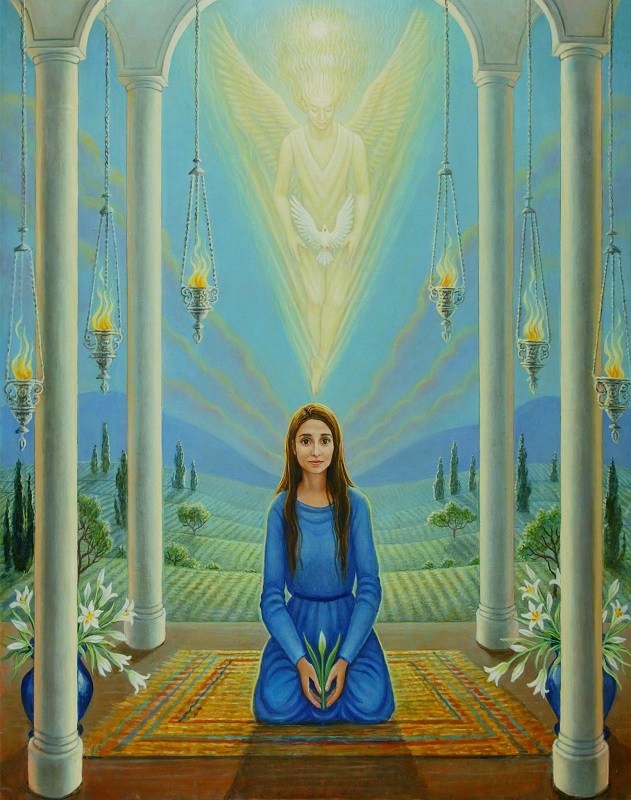
Now ... the angel Gabriel was sent from God to a town of Galilee called Nazareth,
unto a virgin betrothed to a man named Joseph, of the house of David, and the virgin’s
name was Mary. And he went in unto her and said, “Hail, full of grace, the Lord
is with thee.” And she was troubled at his word and asked herself what manner of
salutation this might be. And the angel said to her,“Fear not, Mary, for thou hast
found favour before God. And behold, thou shalt conceive in thy womb and shalt bring
forth a son and thou shalt name him Jesus. He shall be great, and shall be called
Son of the Most High; and the Lord God shall give to him the throne of David his
father, and he shall reign over the house of Jacob forever, and of his reign there
shall be no end.”
And Mary said unto the angel, “How shall this be, seeing that I know not man?” And
the angel said to her, “The Holy Spirit shall come upon thee, and the power of the
Most High shall overshadow thee. Therefore the holy one to be begotten shall be
called the Son of God.” ... And Mary said, “Behold the handmaid of the Lord, be
it done to me according to thy word!”
— Luke 1:26-38
In this painting the angel appears behind Mary to suggest an interior rather than an exterior presence. Mary’s reply to the angel has become a measure for all of us — how far are we able to say, “Be it done to me according to thy word — not my will but thine?” There is a sense in which we can all strive to become like Mary — and in emptying our spirits of self-will, the divine child can be born anew in each of us.
| Home | Artist | Portraits | Visionary Paintings |
| Books | Shop | Links | Mische Technique Demo |